Autoreactive CD8+ T cells are restrained by an exhaustion-like program that is maintained by LAG3
- PMID: 35618829
- PMCID: PMC9179227
- DOI: 10.1038/s41590-022-01210-5
Autoreactive CD8+ T cells are restrained by an exhaustion-like program that is maintained by LAG3
Abstract
Impaired chronic viral and tumor clearance has been attributed to CD8+ T cell exhaustion, a differentiation state in which T cells have reduced and altered effector function that can be partially reversed upon blockade of inhibitory receptors. The role of the exhaustion program and transcriptional networks that control CD8+ T cell function and fate in autoimmunity is not clear. Here we show that intra-islet CD8+ T cells phenotypically, transcriptionally, epigenetically and metabolically possess features of canonically exhausted T cells, yet maintain important differences. This 'restrained' phenotype can be perturbed and disease accelerated by CD8+ T cell-restricted deletion of the inhibitory receptor lymphocyte activating gene 3 (LAG3). Mechanistically, LAG3-deficient CD8+ T cells have enhanced effector-like functions, trafficking to the islets, and have a diminished exhausted phenotype, highlighting a physiological role for an exhaustion program in limiting autoimmunity and implicating LAG3 as a target for autoimmune therapy.
© 2022. The Author(s), under exclusive licence to Springer Nature America, Inc.
Conflict of interest statement
Competing interests
D.A.A.V and C.J.W. declare competing financial interests and have submitted patents covering LAG3 that are licensed or pending and are entitled to a share in net income generated from licensing of these patent rights for commercial development. DAAV: cofounder and stock holder – Novasenta, Potenza, Tizona, Trishula; stock holder – Oncorus, Werewolf, Apeximmune; patents licensed and royalties – Astellas, BMS, Novasenta; scientific advisory board member – Tizona, Werewolf, F-Star, Bicara, Apeximmune, T7/Imreg Bio; consultant – Astellas, BMS, Almirall, Incyte, G1 Therapeutics, Inzen Therapeutics; research funding – BMS, Astellas and Novasenta. E.J.W. has consulting agreements with and/or is on the scientific advisory board for Merck, Roche, Pieris, Elstar, and Surface Oncology. E.J.W. has a patent licensing agreement on the PD-1 pathway with Roche/Genentech. E.J.W. is a founder of Arsenal Biosciences. The other authors declare no competing interests
Figures
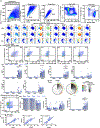
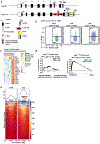
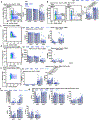
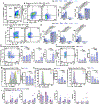
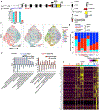


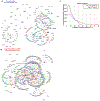
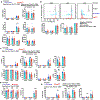





References
Methods References
Publication types
MeSH terms
Grants and funding
- P01 CA210944/CA/NCI NIH HHS/United States
- F31 AI147638/AI/NIAID NIH HHS/United States
- R01 AI144422/AI/NIAID NIH HHS/United States
- U19 AI082630/AI/NIAID NIH HHS/United States
- P01 AI112521/AI/NIAID NIH HHS/United States
- R01 AI115712/AI/NIAID NIH HHS/United States
- T32 AI089443/AI/NIAID NIH HHS/United States
- R01 DK089125/DK/NIDDK NIH HHS/United States
- P01 AI108545/AI/NIAID NIH HHS/United States
- DP2 AI164325/AI/NIAID NIH HHS/United States
- R01 AI105343/AI/NIAID NIH HHS/United States
- P30 CA047904/CA/NCI NIH HHS/United States
- S10 OD011925/OD/NIH HHS/United States
- U19 AI117950/AI/NIAID NIH HHS/United States
- U01 HG012041/HG/NHGRI NIH HHS/United States
LinkOut - more resources
Full Text Sources
Other Literature Sources
Medical
Molecular Biology Databases
Research Materials

